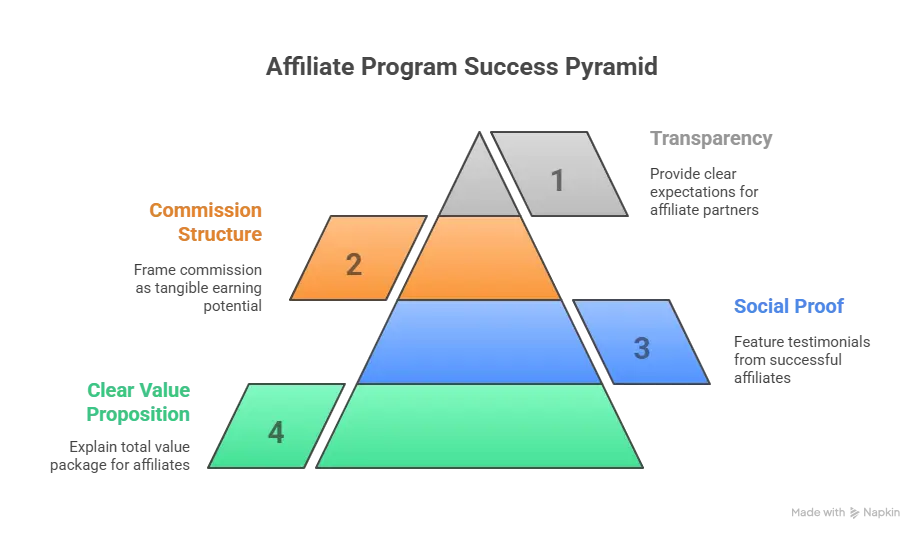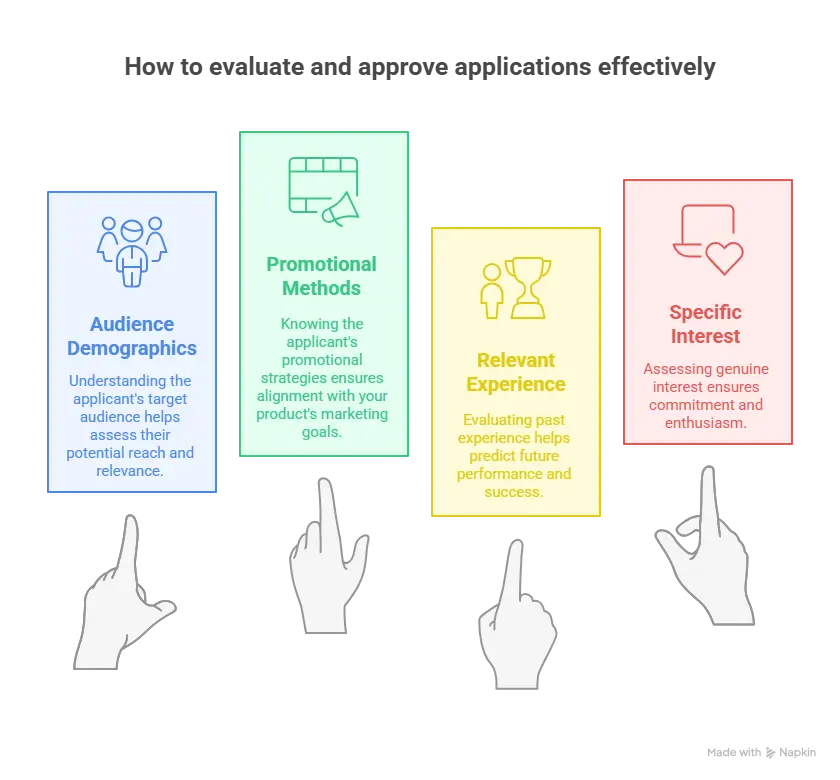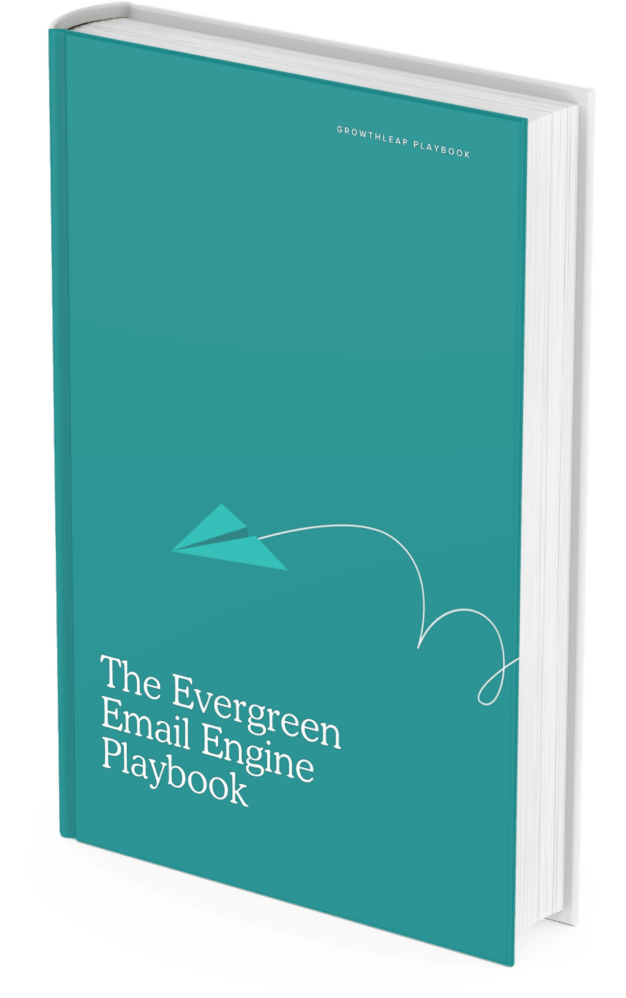
Building a successful online business doesn’t have to mean doing everything yourself. Smart entrepreneurs know the secret to scaling beyond their own reach: leveraging other people’s audiences through affiliate marketing.
Making an effective funnel is crucial for affiliate marketing success, as it helps guide prospects through each stage and maximizes conversions.
An affiliate marketing funnel isn’t just another sales funnel with a different name. It’s a strategic system designed specifically to attract, vet, and activate partners who’ll promote your products to their audiences.
While a regular sales funnel focuses on converting prospects into customers, an affiliate funnel converts potential partners into active promoters.
The difference between businesses that struggle to find quality affiliates and those with waiting lists of eager partners? Building the best affiliate marketing funnel as a key differentiator, with a well-designed recruitment and activation system.
Are you ready to build your own funnel and start seeing results?
Key takeaways:
• Affiliate funnels help you scale beyond your own audience reach by tapping into established communities
• The right funnel structure attracts high-quality affiliates who actually convert, not just anyone with a social media account
• Adding urgency and scarcity to your affiliate promotions increases success rates and prevents procrastination
• Simple, streamlined systems consistently outperform complex multi-step processes that confuse potential partners
• An effective funnel should ultimately guide potential customers through each stage, turning them into paying customers and maximizing your affiliate program’s results.
What is an affiliate marketing funnel?
An affiliate marketing funnel is a systematic process that guides potential partners from initial awareness of your program through to becoming active, successful promoters of your products.
You can think of it as your recruitment and onboarding pipeline. Affiliate marketing sales funnels can vary depending on the specific affiliate marketing campaign and niche, with different structures and strategies tailored to maximize conversions and revenue.
Unlike standard sales funnels that target end consumers, affiliate funnels speak directly to content creators, influencers, and business owners who already have audiences. These partners become your extended sales team, promoting your products in exchange for commissions. For example, if you’re targeting design-focused creators, offering tools like a logo maker can increase appeal and boost partner engagement.
The typical affiliate journey flows through four key stages: awareness (discovering your program), interest (learning about benefits and requirements), application (formal partnership request), and activation (first successful promotion).

Each stage requires different messaging, content, and incentives, and different sales funnels may be used for different types of affiliate marketing campaigns to best suit your goals.
Why do you need a dedicated affiliate recruitment funnel instead of just posting “affiliates wanted” on your website? Because quality partners are selective. They’re looking for programs that align with their audience, offer fair compensation, and provide adequate support.
A professional funnel demonstrates you’re serious about the partnership and worth their time.
The businesses that attract top-tier affiliates treat recruitment like customer acquisition – with dedicated landing pages, nurture sequences, and conversion optimization.
Optimizing your affiliate marketing campaign involves choosing the right funnel structure to attract and activate the best partners.
Step 1: Define your ideal affiliate profile
Before you can attract the right partners, you need to know exactly who you’re looking for. Not all affiliates are created equal, and casting too wide a net often brings low-quality partners who never actually promote anything.
Identifying your target niche is crucial, as it allows you to attract affiliates who are best positioned to reach and influence your ideal customers.
Start with audience alignment. Your ideal affiliate’s audience should overlap significantly with your target customer base. If you sell business productivity software, you want affiliates whose followers are entrepreneurs, not fitness enthusiasts. The demographic match needs to be tight for conversions to happen.
Consider audience size versus engagement quality. An influencer with 100,000 followers but 1% engagement rates will likely underperform compared to someone with 10,000 highly engaged subscribers. Look for partners whose audiences actually interact with their content through comments, shares, and clicks.
Evaluate promotional style and values alignment. Some affiliates are comfortable with hard-sell approaches, while others prefer educational content. Some focus on high-ticket items, others on volume sales. Make sure their natural promotional style matches your product positioning.
Create a simple ideal affiliate persona that includes:
- Primary industry or niche
- Approximate audience size range
- Engagement level expectations
- Preferred promotional methods
- Experience level requirements
- Geographic focus (if relevant)
This profile becomes your filter for both attracting applications and screening candidates. It also helps you craft messaging that resonates with the specific type of partner you want to attract.
To make your target audience aware of your affiliate program, use strategies like content marketing, social media outreach, and targeted advertising to ensure your program stands out to the right affiliates.
By focusing on these elements, you lay the groundwork for building a sustainable affiliate business, centered on long-term relationships with affiliates who are invested in your brand’s success.
Step 2: Create compelling affiliate recruitment content
Your affiliate recruitment content needs to sell the opportunity, not just describe it. Quality affiliates have multiple partnership options, so your program needs to stand out from the competition.
Start with a clear value proposition that answers the question every potential affiliate is asking: “What’s in it for me?” Don’t just list commission rates. Explain the total value package including commission structure, promotional support, the types of affiliate products affiliates will be promoting, product quality, conversion rates, and growth potential.
Your affiliate landing page should include social proof prominently. Feature testimonials from existing successful affiliates, including specific earnings or conversion data when possible. Additionally, share valuable insights from top affiliates about their strategies and experiences. Nothing convinces like seeing other people already succeeding with your program!
Commission structure presentation matters more than you might think. Instead of just stating “25% commission,” frame it as “Earn $250 for every $1,000 sale” or “Our top affiliates average $2,500 monthly.” Make the earning potential tangible and exciting.
Provide transparency about what you expect from partners. Include information about promotional requirements, approval processes, payment terms, and any restrictions. Unclear expectations lead to disappointed affiliates and poor relationships.

Include information about the support you provide. Mention promotional materials, training resources, dedicated affiliate managers, or exclusive bonuses. We offer ongoing support to affiliate marketers at every level, ensuring partners know they won’t be left to figure everything out alone.
Explain why your product converts well. Mention key selling points like money-back guarantees, comprehensive training, or unique features that make promotion easier. An affiliate marketer can benefit from promoting your program because these features help drive higher conversions and passive income.
The more upfront and transparent you are, the more convincing and trustworthy you’ll be in the eyes of potential affiliates.
Step 3: Design high-converting landing pages specifically for affiliate marketing
A high-converting landing page is the linchpin of any successful affiliate marketing sales funnel. This is where your potential customers land, learn about your affiliate product, and decide whether to take the next step.
To maximize your affiliate marketing sales, your landing page needs to be both visually appealing and strategically structured.
Using all of the copy you created in step 2, create your landing page and start with a compelling headline that immediately communicates the core benefit of the product or offer. Then, follow up with a subheadline that provides additional context and entices visitors to keep reading.
Make sure you use high-quality product images or videos to showcase the affiliate product in action, helping visitors visualize its value.
Highlight the key benefits of the product, focusing on how it addresses your audience’s pain points or improves their lives. Incorporate social proof, such as customer testimonials, reviews, or case studies, to build trust and credibility.
A clear and prominent call-to-action (CTA) should guide visitors toward the desired action, whether it’s clicking your affiliate link, signing up, or making a purchase.
Don’t forget to include trust badges – such as security certificates, money-back guarantees, or industry certifications – to reassure visitors that your offer is legitimate and safe.
By optimizing each element of your landing page, you’ll create a smooth experience that drives more conversions and increases your affiliate marketing sales.
Tip: Check out our landing page guide to learn all the ins and outs of amazing landing page creation!
Step 3: Build your affiliate application and onboarding process
Your application process serves dual purposes: gathering information you need to evaluate partnerships and demonstrating your program’s professionalism.
A well-designed application attracts serious candidates while deterring those who aren’t truly committed, and incorporating opt-in forms to capture affiliate applications also supports lead generation by collecting valuable contact information for future nurturing.
Essential application questions should cover audience demographics, promotional methods, relevant experience, and specific interest in your product. Include an opt in form for collecting contact information, and ask for concrete details like website URLs, social media handles, and examples of previous promotional content.
Include screening questions that help identify quality candidates. Ask about their typical audience engagement rates, preferred promotional frequency, and experience with similar products. These responses help you prioritize applications and set appropriate expectations.
Consider implementing a hybrid approval process.
Use automated approval for clearly qualified candidates who meet all basic requirements, but manually review applications that need closer evaluation. This speeds up the process for obvious matches while ensuring quality control.

Setting up affiliate tracking and attribution
Reliable tracking is non-negotiable for affiliate success. Partners need confidence that their referrals will be properly credited and compensated. Choose tracking systems that handle multiple attribution models and provide detailed reporting.
Most affiliate programs use cookie-based tracking with 30-60 day attribution windows. Longer windows are generally better for complex sales cycles or higher-priced products. Make sure your tracking can handle cross-device purchases and multiple touchpoints.
Provide affiliates with clear tracking links and easy-to-use link generation tools. Complicated tracking systems discourage promotion and create support headaches. The simpler the better!
Step 4: Set up email sequences for affiliate sales
Email marketing is a powerful tool for nurturing leads and driving conversions within your affiliate marketing sales funnel. Setting up automated email sequences allows you to consistently engage your audience, build trust, and guide them toward making a purchase through your affiliate link.
Begin your sequence with a warm welcome email that introduces yourself and the affiliate product, offering immediate value – such as a helpful tip or free resource. Follow up with a series of emails that dive deeper into the product’s features, benefits, and real-life success stories.
Another good practice is to use testimonials and case studies to reinforce credibility and address common objections.
Incorporate scarcity tactics, like limited-time offers or exclusive discounts, to create urgency and encourage action. You can also personalize your email campaigns by segmenting your list based on subscriber interests, behaviors, or demographics. This ensures that each message is relevant and resonates with the recipient, increasing the likelihood of affiliate marketing sales.
By automating your email marketing efforts, you can maintain consistent communication with your audience, nurture relationships, and steadily move prospects through your sales funnel toward conversion.
Tip: Urgency and scarcity based tactics work! With Deadline Funnel, you can incorporate personalized deadlines in your email campaigns to drive conversions and boost the success of your affiliate program. Try Deadline Funnel for yourself and see the results.
[Try free for 14 days]
Step 5: Integrate social media in your affiliate funnel
Social media marketing is a dynamic way to amplify your affiliate marketing sales funnel and reach a broader audience. Integrating social media into your funnel is a great way to drive more traffic to your landing page, engage with potential customers, and boost your affiliate marketing sales.
Start by establishing a presence on key social media platforms where your target audience spends their time, such as Facebook, Instagram, Twitter, or LinkedIn. Share valuable content, including blog posts, product reviews, and behind-the-scenes looks, to build trust and authority.
Promote your landing page through regular social media posts and encourage your followers to share with their networks for increased reach.
Another way to get a foot in the door is to leverage paid social media ads to target specific demographics and interests, driving highly qualified traffic to your landing page. Collaborate with influencers in your niche to tap into their established audiences and add credibility to your affiliate offers. Running contests or giveaways can also generate buzz and attract new followers who are interested in your affiliate product.
Monitor your social media analytics to track engagement, clicks, and conversions, and use these insights to refine your social media marketing efforts for even better results.
Through making social media an integral part of your affiliate marketing sales funnel, you’ll expand your reach and drive more affiliate marketing sales.
Step 6: Launch and promote your affiliate program
Having a great affiliate program means nothing if potential partners don’t know it exists. You need a proactive recruitment strategy to attract your ideal affiliates.
Start with your existing network. Reach out to customers who’ve had great experiences with your product, industry contacts, and anyone who’s mentioned your brand positively. These warm connections often make the best initial affiliates.
Join affiliate networks and directories where your target partners spend time. Platforms like ShareASale, CJ Affiliate, and ClickBank can provide exposure to experienced affiliates actively seeking new programs.
Additionally, leveraging influencer marketing can help you reach new affiliates by tapping into established audiences and building credibility for your program.
Attend industry events, conferences, and online communities where potential affiliates gather. Building relationships in person often leads to stronger partnerships than cold outreach.
Use direct outreach strategically. Research potential partners thoroughly before reaching out. Personalized messages that reference their specific content or audience perform much better than generic recruitment emails. Announce your affiliate program launch with a social media post to increase visibility and attract interest from potential partners.
Consider running paid advertising to promote your affiliate program. Target audiences interested in affiliate marketing within your industry. This can be particularly effective for reaching affiliates who aren’t already in your network.
Providing promotional materials and resources
Successful affiliates promote more when you make it easy for them. Develop a comprehensive resource library that includes email templates, social media graphics, banner ads, product demos, key talking points, and resources for affiliates who use a YouTube channel.
Create content for different promotional styles and platforms. Some affiliates prefer email marketing, others focus on social media, some use blog content or video reviews, and many leverage a YouTube channel for product demonstrations and audience engagement.
Providing blog post templates or examples, as well as materials for multiple channels, increases overall promotional activity.
Include guidelines about brand usage, prohibited promotional methods, and compliance requirements. Clear boundaries prevent issues and protect your brand reputation.
Step 7: Optimize and scale your affiliate funnel
Once your affiliate program is running, focus on continuous improvement through data analysis and systematic optimization. Building an effective affiliate funnel and an effective affiliate marketing funnel is crucial for long-term success, as these strategies guide potential customers from awareness to purchase and foster ongoing engagement.
Track key metrics like application rates, approval percentages, time to first promotion, and average affiliate performance.
Monitor which traffic sources bring the highest-quality affiliate applications. Analyze what makes an effective sales funnel by identifying which channels consistently deliver partners who actually promote and convert well.
A/B test different elements of your recruitment materials. Try various commission structures, value propositions, and application processes to see what attracts better candidates. Small changes can significantly impact application quality.
Adding time-sensitive elements to affiliate promotions can increase urgency and reduce procrastination. Limited-time bonuses, exclusive promotional periods, or deadline-driven campaigns often motivate faster action from both affiliates and their audiences.
Develop a system for identifying and nurturing your top performers. Provide additional support, exclusive opportunities, or performance bonuses to affiliates who consistently deliver results.
Successful sales funnels not only drive conversions but also help generate repeat customers, as happy top performers often become your best recruitment sources through referrals.
Common affiliate marketing funnel mistakes to avoid
Many businesses sabotage their affiliate programs before they even get started. Here are the most common pitfalls that kill otherwise promising programs.
Over-complicating the application process is the fastest way to lose quality candidates. Long forms, excessive documentation requirements, and slow approval processes frustrate potential partners and reduce application completion rates.
Poor communication destroys affiliate relationships. Delayed responses to questions, unclear program updates, and lack of ongoing support make affiliates feel undervalued and more likely to prioritize other programs. Failing to nurture relationships with your affiliates can also impact how well they connect with potential customers and prospective customers, reducing the effectiveness of your program.
Inadequate tracking and attribution problems create trust issues. When affiliates can’t see their referrals or suspect they’re not getting proper credit, they’ll quickly move to programs with more reliable systems. Accurate tracking of affiliate links is essential to ensure affiliates receive the correct commissions and to maintain transparency in your program.
Setting unrealistic commission expectations either attracts the wrong partners or disappoints good ones. Be honest about typical earnings and the effort required to achieve different income levels.
Pros and cons of affiliate marketing funnels
| Pros | Cons |
| Scale beyond your own audience reach | Requires ongoing management and support |
| Performance-based costs (only pay for results) | Less control over promotional messaging |
| Access to established trust relationships | Potential for brand reputation risks |
| Faster market penetration | Revenue sharing reduces profit margins |
| Reduced advertising costs | Dependency on affiliate performance |
Frequently asked questions
How long does it take to see results from an affiliate program?
Most programs see initial activity within 30-60 days, but significant results typically take 3-6 months as you build relationships and optimize your system. Building an effective affiliate marketing funnel can help you generate income and make money online as your efforts begin to convert leads into sales.
What commission rate should I offer?
Commission rates vary by industry and product type. Digital products often offer 25-50%, while physical products typically range from 5-15%. Research competitor programs for benchmarks.
Should I approve all affiliate applications? No. Quality control is important for program success. Approve affiliates whose audiences align with your target market and who demonstrate genuine interest in promoting your product.
How do I prevent affiliate fraud?
Use reputable tracking software, monitor for suspicious activity patterns, and implement approval processes for new affiliates. Regular auditing helps identify and address issues quickly.
How do I drive results with my affiliate program?
Focus on strategies to generate traffic, such as SEO, social media, and paid advertising, to attract targeted visitors to your offers. These efforts can help increase your affiliate income by converting more leads into paying customers.
Conclusion
Creating a successful affiliate marketing funnel isn’t about finding anyone willing to promote your product – it’s about systematically attracting, vetting, and supporting partners who can genuinely drive results for both their audiences and your business.
The key steps are straightforward: define your ideal affiliate profile, create compelling recruitment content, build a professional application process, actively promote your program, and continuously optimize based on data.
Start simple with a basic funnel and improve it based on real feedback and performance data. The businesses that succeed with affiliate marketing treat it like any other important business process – with dedicated resources, clear systems, and ongoing attention.
Your next step is choosing your first affiliate recruitment strategy. Will you start with your existing network, join an affiliate platform, or create targeted outreach campaigns?
Ready to add urgency and scarcity to your affiliate promotions to boost conversion rates? Deadline Funnel helps you create authentic countdown timers that motivate both affiliates and their audiences to take action.
Start your free trial today and see how urgency can transform your affiliate program results.







